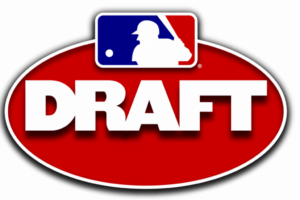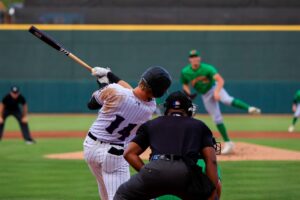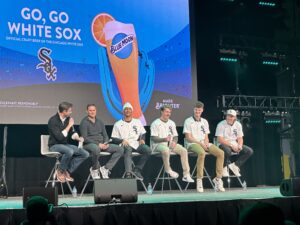State of the System: Starters
Positional Overview:
At the Major League level, Chris Sale is a stud, and Jose Quintana is not too far behind once you factor in his team friendly contract. Rick Hahn made a splash to try and solidify the rotation behind those two by trading for Jeff Samardzija. That move doesn’t look great at this moment, as Marcus Semien is turning into the hitter I thought he would be, and Samardzija’s performance has been disappointing. I also thought it was a strange to trade for a one year rental when the team was not obviously ready to contend. Nevertheless, Samadzija will at least be a solid mid rotation starter, giving the Sox a very competitive top 3. John Danks and Hector Noesi are both erratic, below average starters, making for a weak back of rotation, though Carlos Rodon figures to take plenty of starts away from Noesi. Erik Johnson’s stuff has reportedly returned, so he could be a decent backup option in case anyone gets hurt. In the minors there is good depth throughout the system, with a nice mix of raw, high upside arms, and more polished, safer pitchers.
How should the White Sox handle Carlos Rodon?
Carlos Rodon was rightly sent to the Minors to open the season. He was clearly one of the five most talented starters in the organization, but it was essential that the Sox sent him down for the requisite amount of time in order to secure the seventh year of team control. Now that he is up, Rodon is set to be a key contributor to the pitching staff. His stuff is electric. Fastball velocity is plus-plus and that slider is downright ridiculous. Fastball command still needs a lot of work. The only problem with having Rodon in the Majors now is that it may restrict the development of his changeup. As we have seen thus far, he has almost exclusively thrown his fastball and slider. BrooksBaseball has registered just 11 changeups, making for less than 3% of his total Major League pitches to date. Rodon’s change is not going to improve unless he’s throwing it, and he’s not going to reach his ceiling as a #1 starter if he only has two pitches, so hopefully he will start to mix in more changeups. He should be at least an average MLB starter this season, with the potential to be much more than that. Rick Hahn has mentioned that the plan is for Rodon to remain in the rotation with no innings cap, though they intend to skip his turn in the rotation from time to time or give him extra rest. I think this is the right way to handle the situation. Rodon’s innings will be limited, his arm will be kept relatively fresh, and he will be able to develop in his long-term role.
Top Prospect:
Frankie Montas– Montas was one of the big success stories from last year. He’s always had the monster, triple digit fastball, but his secondary stuff took a step forward, with his slider now flashing plus, his change being potentially average, and his control was much improved too, as he lowered his BB/9 from 4.21 in ’13 to 2.44 last year. This now gives us hope that he can start long-term, rather than being nailed on as a reliever as was previously thought. Montas had a few injuries last year that limited him to just 81 IP, but thankfully they were not arm injuries, and will hopefully not cause him any problems in the future. Montas has a chance to be a good #2 type starter, though his command will probably prevent him from reaching that upside, and could still relegate him to the bullpen.
Best of the Rest:
Spencer Adams– Adams, the second round pick from last years draft, was phenomenal in his pro début, posting a 14.75 K/BB in 41.2 IP with the AZL Sox. His upside is tremendous with four pitches that could all be above average in his fastball, slider, curve and change. That’s rare to see in someone as young as he is. In addition, he’s still highly projectable and has excellent athleticism. Could be a front of rotation starter, but will need several years of development time first.
Chris Beck– Beck was back to his minimal strikeout ways in 2014 as he posted a 4.40 K/9 in 116.2 IP with Birmingham. That number did improve to a 7.56 K/9 in 33.1 IP with Charlotte, though Beck’s control fell away with the promotion, from 2.39 BB/9 with Birmingam to 3.51 BB/9 in Triple-A. The lack of strikeouts is probably an indication that Beck’s breaking pitches are lacking in quality, and Kiley McDaniel recently rated both his curve and slider as below average. It’s difficult to see where Beck fits long-term.
Tyler Danish– Danish had a strong season last year spending time with both Kannapolis and Winston-Salem. He posted a 7.15 K/9, 2.29 BB/9, 1.87 ERA and 3.19 FIP across the two levels. This season Danish has been even better, with a 9.37 K/9 and 2.48 BB/9 In Double-A, despite being the youngest player in the Southern League. According to Baseball Reference, he’s approximately 4.5 years younger than the average Double-A pitcher, making his performance all the more impressive. Danish should wind up with three above average pitches, all of which get a lot of movement. One of the best prospects in the system, if the Sox keep pushing Danish as they have been, he could see the Majors sometime next year.
James Dykstra– Dykstra continues to surprise as an unheralded guy that gets good results. His stuff is more solid than great, with a low 90’s fastball, promising curve and usable change. His control has been fantastic as his BB/9 sat at a mere 0.95 last year, and its been even better to start this season (0.84 BB/9). Dykstra doesn’t strike out as many batters as you’d like, especially given that he’s a little old for his level, but his strong ground ball tendencies help to make up for that. Dykstra is a marginal prospect and will need to keep proving himself as he moves up the levels, but elite control/command guys often end up outperforming expectations.
Jordan Guerrero– Guerrero’s breakthrough was a very pleasant surprise last year as the former 15th round pick put up some excellent numbers with Kannapolis, including a 3.14 FIP, 9.23 K/9 and 3.12 BB/9. He throws a low-90’s fastball and plus change from the left side, but his curve still needs work. The Sox opted to send him back to Kannapolis to start this season, which was a surprise to me given his performance there last year. This could indicate that the Sox are not as excited about his potential as we are, or perhaps they just want to give him extra time to develop as a starter against lesser competition. I think Guerrero could become a back of rotation starter, especially now that his fastball is up a few ticks.
Jace Fry– Fry was selected in the 3rd round of last year’s draft as a polished, lower upside arm that had the potential to move quickly. His arsenal features four pitches, all of which could be at least average, though there is probably not a plus pitch in the mix. The lack of a plus offering will likely restrict Fry’s ability to strike out hitters, so it’s important that his command is on point, otherwise his margin for error will be small. Fry’s level of command will dictate whether he winds up as a solid back of rotation starter or long reliever.
Myles Jaye– Jaye was disappointing last year. There were positive reports on his stuff during spring training that year, but it didn’t translate to good results in the minors. In particular, his 4.92 K/9 was very poor, and you’re not going to have much success with a 1.52 K/BB. I think Jaye’s fastball/slider combo would work better in a relief role.
Thad Lowry– I’ve been pushing Lowry as a sleeper since he was drafted in 2013, and it looks like this might be the year he breaks out. Last year Lowry had a 4.45 K/9, 3.0 BB/9 and 4.13 FIP in 87 innings with Kannapolis. This year he has improved those numbers to a 7.51 K/9, 1.88 BB/9 and 2.99 FIP. He’s showing much better control and a greater ability to strike out batters than in the past, which is obviously a great sign moving forward. Lowry can run his fastball up to 96 and has shown some aptitude for throwing a curve. He’s still raw and highly projectable with nice upside. Could be a top 15-20 prospect in the system by the end of the season.
Luis Martinez– Martinez, one of Marco Paddy’s first signings after joining the organization, made his stateside debut in 2014 and performed fairly well. He finished the season with a 9.57 K/9 splitting his time between the AZL Sox and Great Falls, though his control was not so good with a 4.01 BB/9. Scouting reports are mixed on Luis’ stuff, with some seeing a solid three pitch mix and others seeing more marginal stuff.
One for the future…
Victor Done– Done struck out a lot of batters last year in the Arizona League as he posted a 9.89 K/9. He features a very good fastball, but his secondary offerings need a lot of work, and his control was awful (6.08 BB/9). I imagine he’ll return to the AZL this year.
Want to know right away when we publish a new article? Type your email address in the box and click the “create subscription” button. Our list is completely spam free, and you can opt out at any time.








Any word on the nature/extent of Spencer Adams’s (presumed) injury?
He hasn’t pitched since Wednesday of a week ago (May 6) and was scratched from a scheduled start this past Tuesday. He went 6 innings in his last outing, his best of an early, early season marked by hard hit balls and poor performances of limited duration.
Stay metal!
Hello. Adams did make a start just after this comment. He’s been slowed down a bit lately, partly as the general plan to take it easy with him in his first full pro season, but also because he had a sore back recently.